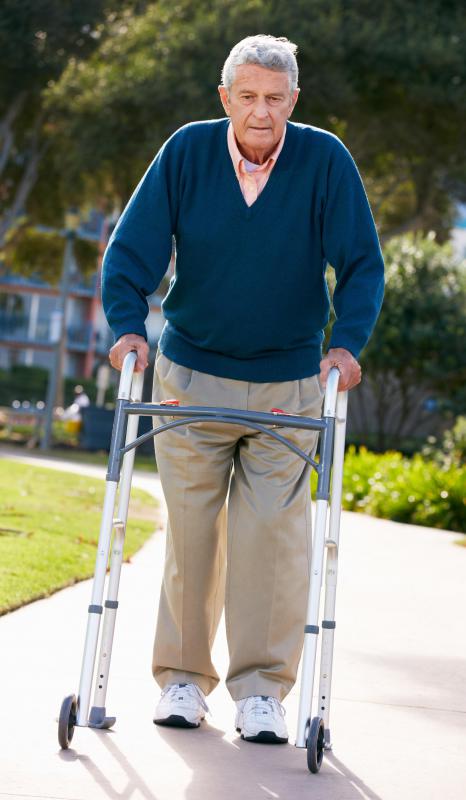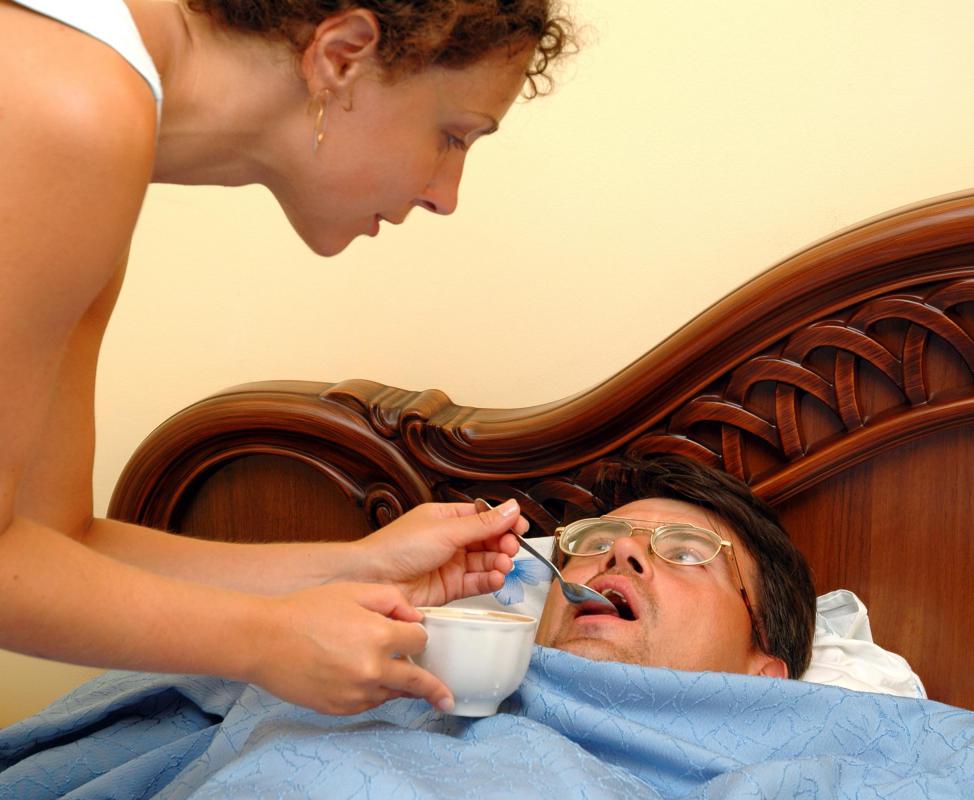At WiseGEEK, we're committed to delivering accurate, trustworthy information. Our expert-authored content is rigorously fact-checked and sourced from credible authorities. Discover how we uphold the highest standards in providing you with reliable knowledge.
What is Spastic Quadriplegia?
Spastic quadriplegia, or spastic tetraplegia, is a disorder which affects both arms, both legs and the torso, causing muscle stiffness, weakness and difficulty moving. It is the most severe form of cerebral palsy. Cerebral palsy is the name given to a range of conditions in which brain damage or abnormal brain development leads to problems with muscle movement. Spastic cerebral palsy is the most common form of the condition, and the term spastic describes muscles which are unusually stiff. Children who have spastic quadriplegia may experience seizures, swallowing difficulties and delayed mental development.
The causes of cerebral palsy, and spastic quadriplegia, are not fully understood and it is not known why the brain develops abnormally in some cases. Certain factors are known to increase the risk of a baby being born with the condition. These include being a twin or triplet, being premature or having severe jaundice.

Mothers who smoke, drink excessively or take illegal drugs have a greater chance of having a child with cerebral palsy. Infections during pregnancy, such as rubella, can also increase the risk. An infection may also affect the baby after birth and cause cerebral palsy, possibly resulting in spastic quadriplegia. Difficulties at birth, such as a lack of oxygen, used to be considered an important cause, but are now thought to account for a minority of cases.

As well as spastic quadriplegia, the most serious form of the condition, spastic cerebral palsy can give rise to spastic diplegia, which affects both legs, or spastic hemiplegia, in which an arm and a leg on one side of the body are affected by muscle spasticity. Rarely, spastic monoplegia occurs, affecting only one limb. Someone with a milder form of spastic hemiplegia may only suffer from minor walking difficulties and could lead an independent life, while a person with serious spastic quadriplegia might be dependent on a wheelchair to get around.

Treatment of spastic quadriplegia depends upon the individual, as the problems vary in each case. Although the brain damage is not reversible, physiotherapy can help prevent stiff muscles from progressing to become permanently fixed limbs. Therapy may also improve speech and skills required for everyday activities, such as eating or moving across the floor, where this is possible. Drugs are sometimes used to prevent seizures and to relax muscles, reducing spasticity. Occasionally surgery is carried out to correct deformities and lengthen tightened muscles if this will improve quality of life.

The outlook for children with spastic quadriplegia depends on the severity of the individual condition. A minority of children, less than a quarter of those with quadriplegia, may be able to walk and live independent lives. Around half will require some care from others and the remaining quarter, who have the most extreme impairment, will be unable to walk and will be completely dependent on others.
AS FEATURED ON:
AS FEATURED ON:

















Discuss this Article
Post your comments